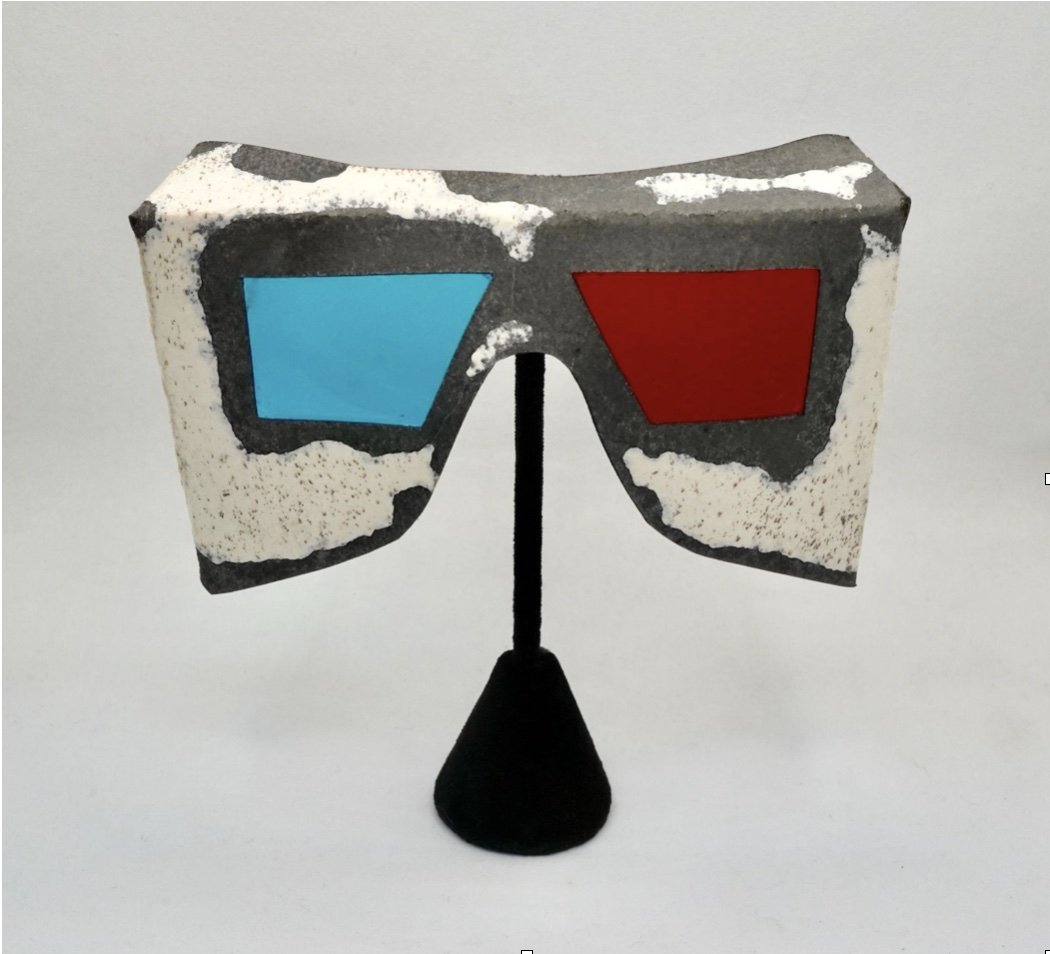Decoration for the End of the World
Norah Lovell, Alison Owen, Sadie Sheldon & 15 Invited Artists
John Barnes, Lee Deigaard, Marianne Desmarais, Natori Green & Wynter Diaz, Sally Heller, Jack Niven, Mary Jane Parker, Alex Podesta, Marta Rodriguez Maleck, Cynthia Scott, Maxx Sizeler, Alexis Stahl, Jenna Turner, Clifton Webb
January 8 - February 6, 2022
artist statements
When Mount Vesuvius erupted in 79 AD, the thriving city of Pompeii was frozen in its tracks. Amphitheaters were encased in pumice, but also loaves of bread and small decorative objects, the stockpile of the everyday. Seemingly, an entire populous was engaged in the desire to ornament and accrete until the last possible moment. During this global pandemic and impending climate catastrophe, we are also looking to ornament, refurbish and invent anew against the melancholy backdrop of world-endings. Curated by Norah Lovell, Decoration for the End of the World features installations and individual artworks that elaborate on the decorative realm and often the domestic interior and its furnishings as a locus for meaning-making, and storytelling. As with prior artistic movements like Bauhaus and Bloomsbury these artists reimagine the material world at a tipping pointing with new systems for living and novel ways of making a living.
Norah Lovell’s Melancholy Inkwell wall-length tableau includes a hand painted mantle and related furnishings evoking museum period rooms, Medieval poetry, dreams of animals and authorship on the eve of apocalypse.
The forms in this installation are pulled from the long history of vessels: the amphorae in art history books, the vases in still life paintings, even mass-produced goods in home decorating manuals and catalogs. Remnants from the creation of one artwork make their way into the next, as Owen moves through categories of sculpture, drawing, collage, and painting. She makes explicit the threads that connect objects across time, creating an archive in which the prized and the quotidian live side by side.
Sadie Sheldon: Dina
One of sixty visitors who appeared in her empty chairs during the early months of the pandemic. Their brief visits bestowed lessons, unveiled narrative and opened aportal to an alternate world.
For a collaborative portion of this larger exhibition observing world endings, both historic and at the precipice of the present moment, 15 artists were invited to interpret a museum key of Pompeii artifacts and create a corresponding mysterious ornament for a last day on earth:
John Barnes: Final Son Rise
Final Son Rise is an eschatological symbolic representation of an impending yet expected final solar event, which will mark the end of this age.
Lee Deigaard: The bones are stones in the body of the earth.
The end of the world is much like its beginning.
Ovid’s Metamorphoses begins: Though there was land and sea and air, it was unstable land, unswimmable water, air needing light. Nothing retained its shape, one thing obstructed another, because in the one body, cold fought with heat, moist with dry, soft with hard, and weight with weightless things…
The bones are stones in the body of the earth.
Marianne Desmarais: Tablet 21
Polished to a warm luster and deceptively heavy, Tablet 21, may have been cast to be worn about the neck, protecting the wearer’s suprasternal notch. Bronze carries its history of utilitarian object making forward in this shape that focuses attention on sinuous curves and incorporates a subtle geometric applique of two central rectilinear shapes.
Natori Green & Wynter Diaz: Vessel and Rebirth
In the depths of despair there are multiple glitters of hope. As things come to an end, clinging to remnants is not necessary for healing.
Sally Heller: Ancient Vase with Encrusted Emoji
The finding of an enigmatic ornamental object from the home of a polyamorous nobleman thought to be related to Julius Caesar.
Jack Niven: Stasis
In our last days together, we took many walks to the center of the city.
Mary Jane Parker: Under Pressure
Under Pressure represents a perfume or healing oil container. The piece was cast using two different glass colors with the hope that the ruby glass would flow into the clear glass during the firing. The contents represented by the ruby glass flowing upward in the bottle is a layman’s version of what might have happened as the pressure built in Mt. Vesuvius, giving the perceptive resident a warning sign of imminent disaster.
Alex Podesta: A Fetish for the Flightless
This talisman from a future or forgotten age hints cat’s cradles, shadow puppets, shibari, flying, weaving, and the o-so-human correlative impulse. And there’s red.
Marta Rodriguez Maleck: TBP | TSP
TBP | TSP is an ergonomic double ended spoon hand carved from wood found in a scrap pile, with one end measuring a tablespoon and the other a teaspoon. TBP | TSP reveals the importance of exact measurements for passed down recipes, of specific tools, of upcycling, and of the hands of those who'd hold such an item.
Cynthia Scott: Stealth/Wealth
Stealth bombers contribute to mutually assured destruction if employed carelessly-but some may wish to gamble on the potential profits wars always produce.
Maxx Sizeler: Eluvial Ashtray
Eluvial deposits are the foundation for our existence in this place (Southern Louisiana) originally called Bulbancha. Capitalism's destruction through oil extraction and chemical refining has polluted and continues to destroy the eluvium that has given us life. We have destroyed paradise.
Alexis Stahl: Multidimensional Alignment Viewer
A viewing apparatus that visually realigns the diverging dimensions for easier navigation of our disintegrating reality.
Jenna Turner: Axe and Tile
Discovered centuries from our last day on earth, these porcelain elements commemorate both the decorative and everyday.
Clifton Webb: Siren Song
I feel we may find a new sense of importance, meaning and worth for what we once had and now it’s gone
Pliny the Younger survived the eruption of Vesuvius in 79 A.D. and went on to describe it as a “melancholy accident” in a series of letters. For this segment of the exhibition artists selected an object from a museum diagram of Pompeii artifacts and created a corresponding final ornament for a last day on earth--the leftovers of a melancholy accident. Like a crime scene body chalk, interiors of objects are voided, and contour lines circumscribe an unknown interior. Oracular and simultaneously mute, what stories do they contain, what do they portend? What will we choose to leave behind?

















